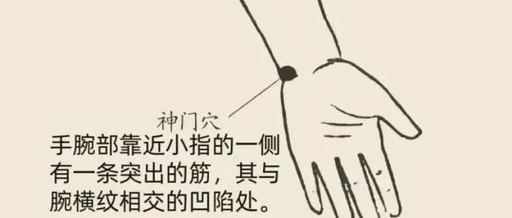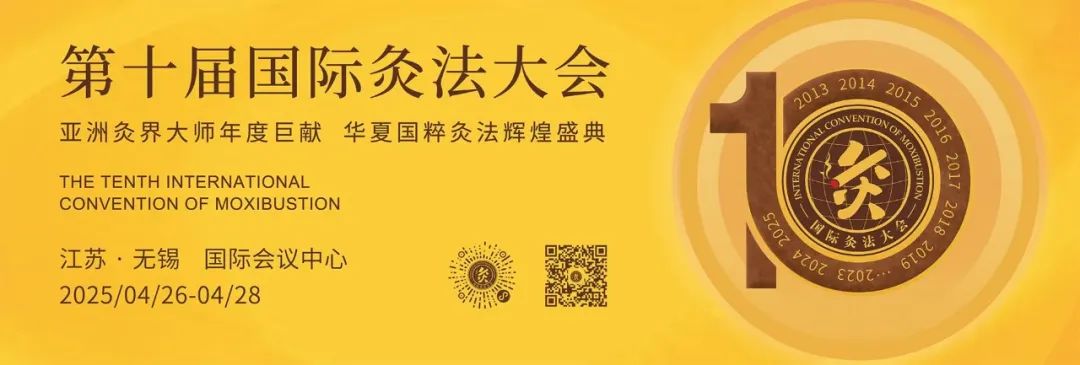
In ancient times, the sun was referred to as the Yang of Heaven, while moxibustion was called the Yang of Earth. The “moxibustion” therapy mentioned in the Huangdi Neijing was widely used during the Shang Dynasty. Moxa fire is pure Yang fire, capable of unblocking the three Yin and traversing the twelve meridians.

What is Moxibustion?
“Ai” refers to mugwort, a perennial herbaceous plant of the Asteraceae family. The leaves of the plant, when rubbed, emit a fragrant aroma and contain volatile essential oils that can prevent and treat diseases, as well as purify the air and repel mosquitoes. “Jiu” refers to the practice of burning moxa on specific acupuncture points or areas of the body based on the theories of TCM organs, meridians, and acupoints, to stimulate the flow of Qi and correct the disordered physiological and biochemical functions of the body. In TCM terms, moxibustion has the effects of warming and unblocking Qi and blood, and tonifying Yang deficiency. There is an ancient saying: “For a disease lasting seven years, seek moxa for three years.”

Benefits of Moxibustion

1. Warming and Unblocking Meridians
Warming and unblocking the meridians, dispelling cold and alleviating pain, used for conditions such as cold stagnation of blood, wind-cold-damp obstruction, dysmenorrhea, amenorrhea, cold hernia, abdominal pain, rheumatism, rheumatoid arthritis, cervical and lumbar diseases, knee joint issues, wind-cold cough, and colds.

2. Tonifying Deficiency and Strengthening the Foundation
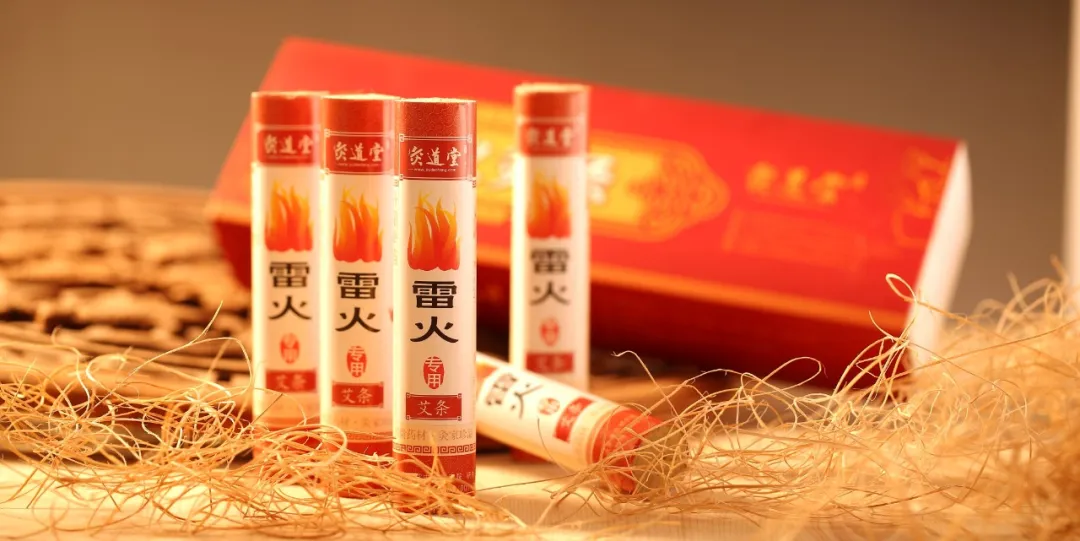
Tonifying deficiency and strengthening the foundation, restoring Yang and stabilizing collapse, for symptoms such as vomiting and diarrhea due to spleen and stomach Yang deficiency; prolonged diarrhea, enuresis, nocturnal emissions, impotence, and premature ejaculation due to spleen and kidney Yang deficiency; and prolapse of internal organs, uterine prolapse, rectal prolapse, and abnormal uterine bleeding due to insufficient Qi.

3. Reducing Swelling and Dissolving Nodules
Promoting Qi and invigorating blood, reducing swelling and dissolving nodules, for certain surgical conditions such as early-stage sores, abscesses that have not yet suppurated, and chronic non-healing sores.

4. Disease Prevention and Health Maintenance
Preventive health care, when the body is in a sub-healthy state or free of disease, performing moxibustion can stimulate the body’s Zheng Qi (vital energy), enhance disease resistance, and serve a preventive health function.

The Three Magical Acupoints of the Human Body
There are hundreds of acupoints on our body, but those named as “gates” must have significant importance. Today, we introduce these “three gates,” which are quite remarkable. One regulates sleep, another manages your emotions, and the last one governs the Yang Qi (kidney Qi) of the entire body, all being major acupoints.

1. Shenmen Point – The Gate of Peaceful Sleep
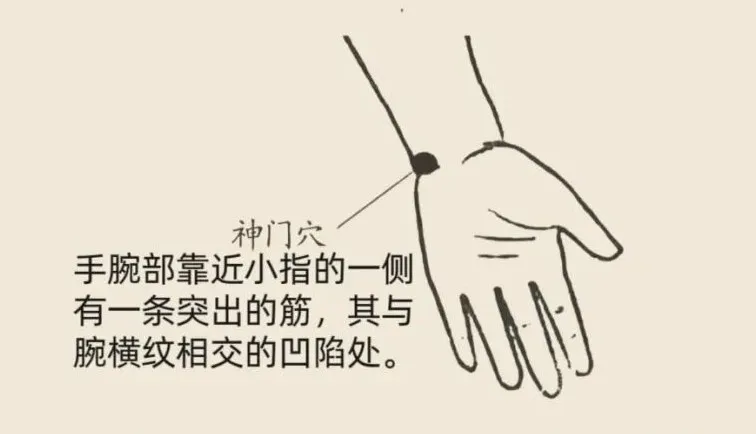
The Shenmen point is the source point of the heart meridian. In TCM, there is a saying: “When the organs are diseased, one should select the twelve source points,” and the twelve source points refer to the twelve source acupoints. Naturally, diseases of the heart are treated at the Shenmen point.
Indications: Heart pain, irritability, palpitations, insomnia, motion sickness, and other heart and mental disorders. It is also effective for gastrointestinal discomfort caused by heart fire.
Combination points: Combine with Neiguan and Xinshu to relieve heart pain; combine with Neiguan and Sanyinjiao to alleviate forgetfulness and insomnia.
Location: Located at the wrist, when the palm faces oneself, it is at the transverse crease of the wrist joint, in the depression between the bones extending from the little finger downwards. It is located deeper in the body, requiring firm pressure to locate the Shenmen point.
The Shenmen point has a calming and soothing effect on the mind and nerves. As the saying goes, “Eating well is not as good as sleeping well,” and the secret to health is prioritizing sleep. TCM believes that insomnia involves multiple organs but is directly related to the stability of the heart and spirit. The heart houses the spirit; when the heart spirit is calm, one can sleep well.
Health method: Moxibustion can be performed gently for 5-10 minutes each time, or the point can be pressed repeatedly with the thumb for 30 times, especially effective when performed before sleep.

2. Qimen Point – The Gate of Releasing Depression
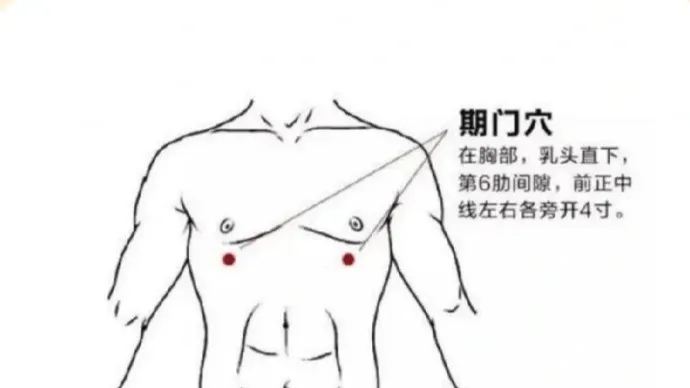
This is the Mu point of the liver meridian, a specific acupoint where the Qi of the organs converges in the chest and abdomen. The liver is referred to as the “General’s Office,” and the Shanghan Lun considers this point the first choice for soothing the liver and gallbladder.
Indications: Frustration, emotional depression, and digestive disorders. It helps to soothe liver Qi, alleviate emotional depression, and also regulates digestive issues caused by stagnant liver Qi.
Location: Located directly below the nipple, generally in the middle of the ribcage beneath the breast.
Many women experience breast pain before menstruation; pressing the Qimen point can alleviate this pain. Opening this “gate” can relieve emotional depression, and moxibustion can fundamentally resolve liver Qi stagnation.
Stimulation method: Use moxibustion for cold conditions, and for heat conditions, use dispersing techniques.
Moxibustion time: About 30 minutes; for self-massage, apply moderate pressure until a slight soreness and warmth are felt.

3. Mingmen Point – The Gate of Tonifying the Kidneys
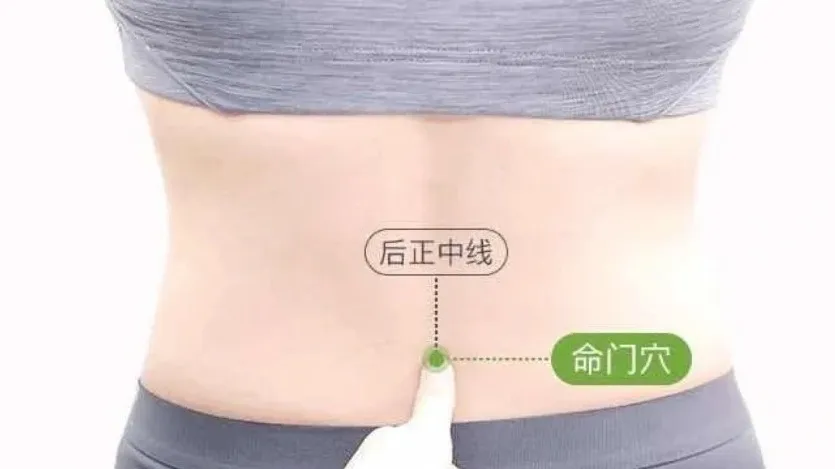
The Mingmen point is located on the Du meridian. The Du meridian is known as the “Sea of Yang Meridians,” governing all Yang channels in the body.
Indications: Alleviating kidney Yang deficiency, cold intolerance, strengthening the kidneys, warming the kidneys, consolidating kidney Qi, delaying aging, and unblocking the Du meridian.
Location: At the same horizontal level as the navel; follow the navel backward, and the depression in the center of the back is the location.
“Ming fire is the root of Yang Qi; it must not decline!” Kidney essence is fundamental to the body, divided into kidney Yang and kidney Yin. The Mingmen is where kidney Yang resides. If the fire is insufficient, it cannot promote the movement of kidney water, leading to symptoms such as lower back and knee weakness, edema, male impotence, and female infertility due to cold in the uterus, commonly referred to as kidney Yang deficiency. “Tonifying the Mingmen with moxibustion is the first choice.” Skillfully using moxibustion can tonify Yang and nourish the kidneys.
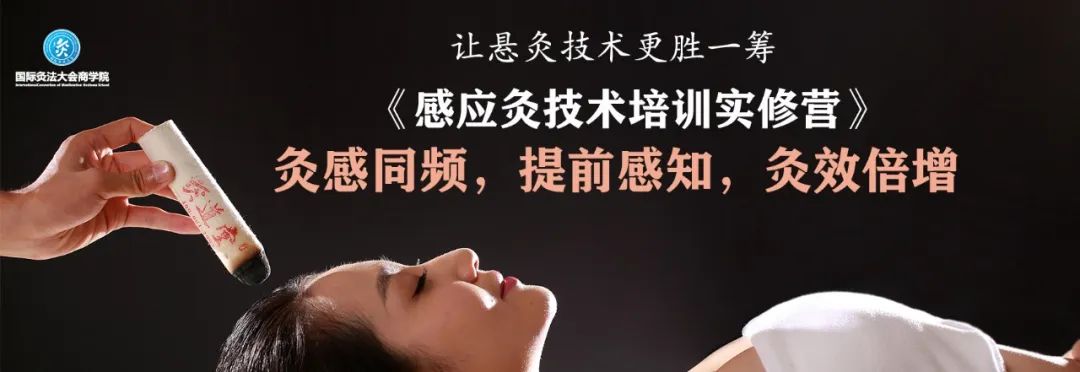
↙Read the original text Online learning of moxibustion丨If this is useful to you, please clickLooking Like↘

